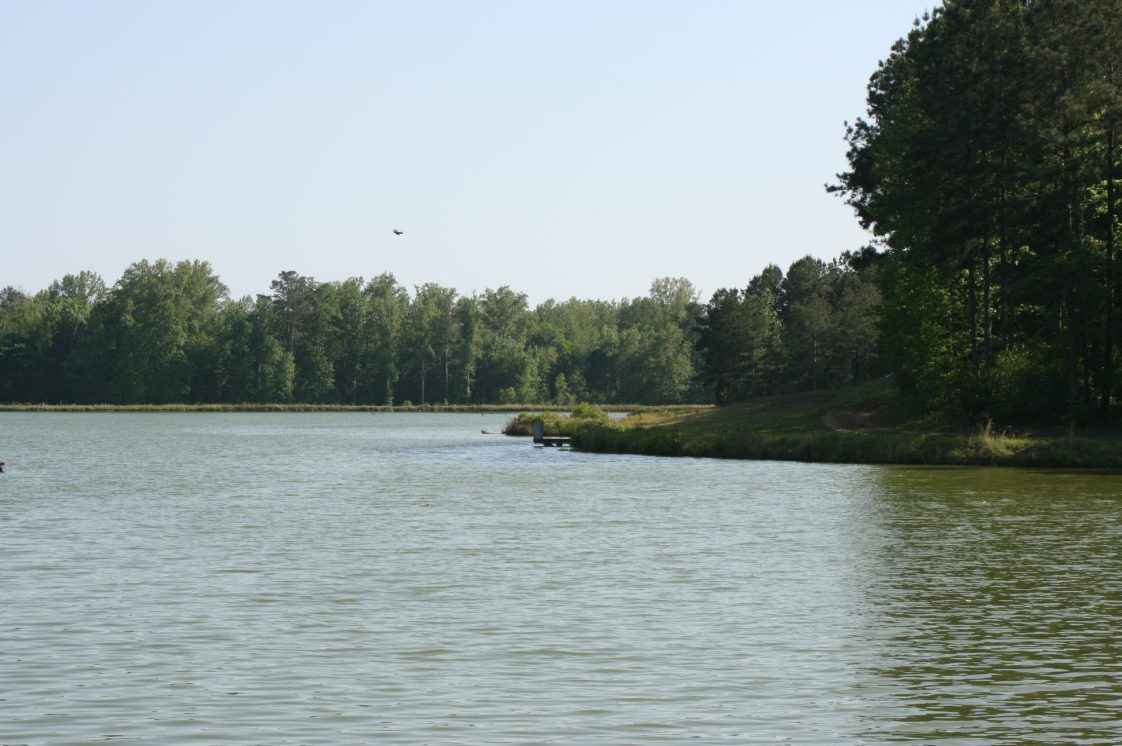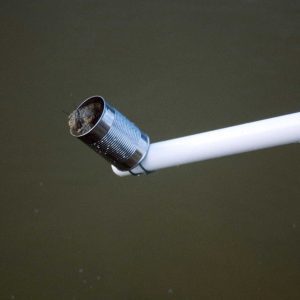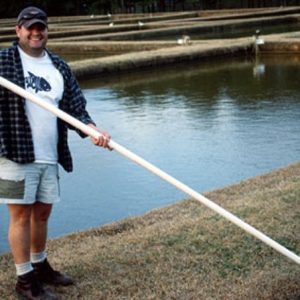Fish & Water

Adding agricultural lime to ponds with low alkalinity (less than 20 mg/l) can greatly increase productivity. Lime affects the system in several ways. It acts as a buffer maintaining the pH between 7 and 8.5. Broader swings in pH can be very stressful to the organisms in the pond.
Adding agricultural lime to fishing ponds with low alkalinity and hardness (less than 20 mg/l) can significantly increase the productivity of these systems. Lime affects the system in several ways. Agricultural lime is mostly calcium and magnesium carbonate, and it is the carbonate (CO3 — ) that acts as a buffer, maintaining the pH between 7 and 8.5, which is just above neutral (neither acidic nor basic). Broad swings in pH can be very stressful to the organisms in the pond. Lime also changes the chemistry of the water and pond soils making nutrients more available to aquatic organisms, especially algae, increasing hardness that can help clear clay from the water, and adding many important nutrients to the system.
Agricultural lime is simply crushed limestone formed in the bottoms of ancient oceans and wetlands. Limestone is mainly calcium and magnesium carbonate (CaCO3 and MgCO3) from the deposited shells of ancient organisms and the result of a chemical reaction that can cause it to rain down on the bottom in warm, productive seas.
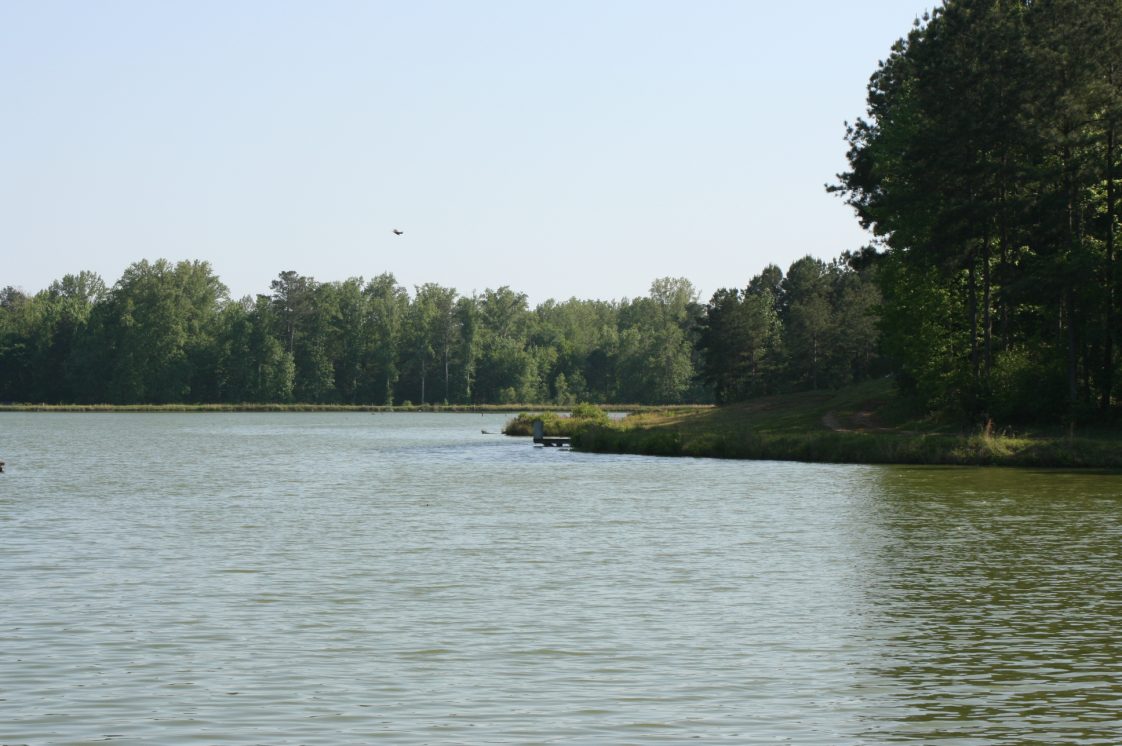
Figure 1. Adding agricultural lime to ponds with low alkalinity can change the chemistry of the water and pond soils.
Many ponds in Alabama collect water from watersheds with soils of very low alkalinity, the ability to neutralize acid. Exceptions of low alkalinity soils are in areas of the state with significant limestone, including the Black Belt region, where the soils are derived from weathered limestone. Ponds with low alkalinity (less than 20 mg/l) typically respond poorly to the addition of fertilizer. Either the algae bloom never becomes dense, leaving the water clear even after adding fertilizer, or the bloom is short lived. Unless a pond is clouded with clay turbidity (i.e., muddy water), low-alkalinity ponds tend to have very clear water. A disk lowered into the water is visible to depths greater than 24 inches (Secchi disk depth). Sometimes, the water is brown stained as well. Without productive algae, there is not enough food in these low alkalinity ponds for the small animals that are food for fish. These low alkalinity ponds are also more prone to dissolved oxygen depletions because the algae die off in mass. Low alkalinity reduces the amount of copper-containing chemicals that can be safely used to control nuisance algae, such as mat-forming filamentous species. Adding lime can raise the alkalinity so controlling algae with these products can be done with less risk of killing fish in the pond.
Adding lime to a pond also increases the hardness of the pond water. Hardness is a measure of the amount of calcium (Ca++) and magnesium (Mg++) in the water. In our homes, hardness is what tends to create soap scum in showers. Magnesium and calcium tend to cause clay particles, which are suspended in the water making the pond muddy, stick together and sink to the bottom, thus clearing the water. Ponds that are not clouded with clay are more attractive and more productive. Suspended clay shades the algae, reducing photosynthesis and binding phosphorus, making this nutrient unavailable to the algae. This binding by clay can also reduce the effectiveness of certain herbicides.
Beyond providing a buffer to changes in pH and increasing hardness, lime has all the elements that fell to the bottom of that ancient ocean, some of which can be important nutrients. Calcium from the lime is a valuable nutrient for many organisms in the pond, including snails and other animals that are important food for fishes. Calcium is also critical to the teeth, bones, and metabolism of fishes. Magnesium is a major part of dolomitic lime and is a critical element for chlorophyll production in plants and algae. The carbonate in lime can be a source of carbon to highly productive algae. The other elements include molybdenum, copper, iron, manganese, boron, potassium, and others that can be important to algae, plants, and animals.
Testing for Lime Requirements
Water from ponds in areas of Alabama without alkaline soils—the majority of the state—should be tested for alkalinity routinely, perhaps every other year. A small sample of water, a pint or so, taken from the surface is adequate for the test (figure 2). The sample should not contain mud from the pond bottom or large amounts of plant material; a few plant fragments will not affect the test. County Extension personnel or regional Extension agents can either test the sample or provide an appropriate contact for the test. For a small fee, the Auburn University Soil, Forage, and Water Testing Laboratory can test pond water or bottom soils to determine the amount of lime needed. For a soil test, take several samples (6 to 10 per acre for ponds less than 5 acres and 2 to 3 per acre for larger ponds) from different areas of the pond bottom, including the deep, shallow, and upstream areas as well as near the dam. Mud from deep areas of the pond can be sampled using a can attached to the end of a pole (figures 3a and 3b).
- Figure 2. A small sample of water is needed to test for alkalinity.
- Figure 3a. Attach a can to a long pole for sampling deep areas of the pond.
- Figure 3b. A long pole with a can attached to the end can be used to reach deep areas of the pond.
Samples should be thoroughly mixed together and allowed to dry completely. Place the dried, combined sample in a sample box available from your county Extension agent or the Auburn University Soil, Forage & Water Testing Laboratory. Mail to the Soil, Forage & Water Testing Laboratory, ALFA Building, 961 S. Donahue Drive, Auburn University, AL 36849-5411. Clearly mark the sample box as “fishpond lime requirement.” A schedule of charges for the test can be obtained from the lab at (334) 844-3958. The soil analysis will provide a recommendation for lime in tons per acre. This amount should be considered the minimum recommended application rate. If a pond does not respond well to a liming (i.e., the alkalinity and hardness of the water do not increase significantly), then having the soil tested is an important next step. If the soil test does not indicate a need for more lime, then it is likely that the pond has excess low alkalinity water flowing through it; that is, the watershed is too large or a stream or spring is flowing into the pond flushing out the dissolved lime and other nutrients as well. In this case, if the flushing cannot be reduced, liming will not be practical. For information on controlling the amount of water flushing through a pond, see Alabama Extension publication ANR-1114, “Pond Building: A Guide to Planning, Constructing, and Maintaining Recreational Ponds,” at www.aces.edu.
Types of Liming Materials
The term lime is applied to a variety of substances containing one or more active ingredients in different forms. These can vary greatly in their influence on pond chemistry (table 1). Active ingredients include agricultural ground limestone in the form of either calcitic lime, primarily calcium carbonate, or dolomitic lime, a mixture of calcium and magnesium carbonate, burnt lime or quicklime (CaO), slaked or hydrated lime (Ca(OH)2). Except for a few special situations, ground agricultural limestone is, by far, the best choice of liming material for ponds.
Table 1. Types of Liming Materials
| Lime Type | Active Ingredients | Application Rates | Recommendation |
|---|---|---|---|
| Calcitic lime | CaCO3 | At least 2 tons per acre | Recommended. |
| Dolomitic lime | CaCO3, MgCO3 | At least 2 tons per acre | Recommended. |
| Crushed oyster shells | CaCO3 | At least 2 tons per acre | Recommended. |
| Pelletized lime | CaCO3, MgCO3 | At least 2 tons per acre | Not recommended due to high cost and potential problems with the binder. |
| Fluid lime | CaCO3, Ca(OH)2 in some formulations | Depends on formulation | Not recommended due to high cost and the potential to raise pH to toxic levels. |
| Lime wastes | CaCO3, Ca(OH)2 | The smaller of either 200 lb/acre or the amount required to deliver 50 lb/acre of Ca(OH)2 | Not generally recommended; this material could raise pH to toxic levels. |
| Quicklime, burnt lime | CaO | Less than 50 lb/acre | Not recommended; this material could raise pH to toxic levels with only short-term effectiveness. |
| Hydrated lime, slaked lime, builders lime | Ca(OH)2 | 50 to 100 lb/acre | Not generally recommended (see exception in the text); this material could raise pH to toxic levels with only short-term effectiveness. |
Both quicklime and hydrated lime dissolve rapidly in water and can dramatically raise the pH of ponds to levels toxic to fish. Quicklime, in fact, reacts violently with water releasing a tremendous amount of heat in the process. Quicklime is hazardous and is not recommended for use in ponds. Hydrated lime can be used in ponds when alkalinity must be raised quickly although the effect on both the alkalinity and pH is relatively short lived because the materials are rapidly flushed from the system. Examples would be to reverse a toxic level of copper sulfate used in algae control or to reduce the level of dissolved carbon dioxide in a period of low oxygen. Under these conditions, no more than 50 to 100 pounds per acre should be applied. Hydrated lime can be applied in ponds where it is impractical to apply agricultural lime or to temporarily increase alkalinity and hardness in the summer at 50 to 100 pounds per acre when adding two or more tons of agricultural lime per acre might cause an oxygen depletion. Hydrated lime can be spread as powder or mixed with water to make a slurry first. The slurry is safer to apply as powder can blow back on to the person spreading the lime. Precautions including wearing protective clothing (gloves, dust mask or respirator, eye protection, long-sleeved shirt, and long pants) should be taken to protect skin, eyes, and lungs from this caustic material.
Lime waste, byproducts of several industries, including paper production has also been used as a liming product for agricultural fields, and has been suggested for use in ponds. Lime wastes contain primarily calcium carbonate; however, there can be variable amounts of hydrated lime mixed with this product. While lime waste can be used safely, it should be applied in relatively small amounts to avoid raising the pH to toxic levels. Because small amounts of lime waste are applied, multiple applications per year may be needed to adequately raise alkalinity. Ideally, lime waste should be analyzed to determine the percent of hydrated lime so the total application to the pond can be controlled. Other industry alkaline byproducts include boiler wood ash and basic slag. These products should be tested by the Auburn University Soil, Forage & Water Testing Laboratory before being applied to ponds. Silicate slags should not be used in fishponds.
Agricultural lime is the type of lime recommended for ponds to safely provide long-term increases in alkalinity and hardness. Unlike quicklime and hydrated lime, ground agricultural limestone is not very soluble. Because it dissolves more slowly, more agricultural lime should be added to the pond to achieve an effect on its chemistry. Two or more tons of agricultural limestone per acre are generally needed to treat low-alkalinity ponds. When limestone is added under normal conditions and during the cooler months, it is impossible to add too much to ponds. Adding more limestone to the pond simply increases the time until lime is needed again.
Agricultural lime is available in ground, fluid, and pelletized forms. Fluid lime is more expensive than dry products and may contain hydrated lime. If the active ingredient in the fluid lime is calcium carbonate, about twice as much fluid lime must be applied to achieve the same long-term effect as finely ground agricultural limestone. Because fluid lime is so finely ground, it will stay suspended longer and dissolve more quickly than dry lime; however, the difference in cost is prohibitive. Pelletized lime is calcitic or dolomitic limestone mixed with a binding agent that breaks up quickly in water. Pelletized lime is much cleaner and easier to apply than ground limestone. However, pelletized lime is far more expensive than ground lime, and the binding agent can cause a brown stain in ponds. While not directly toxic, this brown stain can increase the demand for oxygen in the pond and shade the oxygen-producing algae, thereby reducing the available dissolved oxygen for fish. Ground agricultural limestone is relatively inexpensive, safe for both the applicator and fish, and provides a long-term increase in alkalinity. Agricultural lime is made by finely grinding various types of limestone or mollusk shells (oysters, clams, mussels). The source of the limestone may affect the cost, depending on local availability. All sources are equally effective if ground to equivalent fineness.
Methods of Application
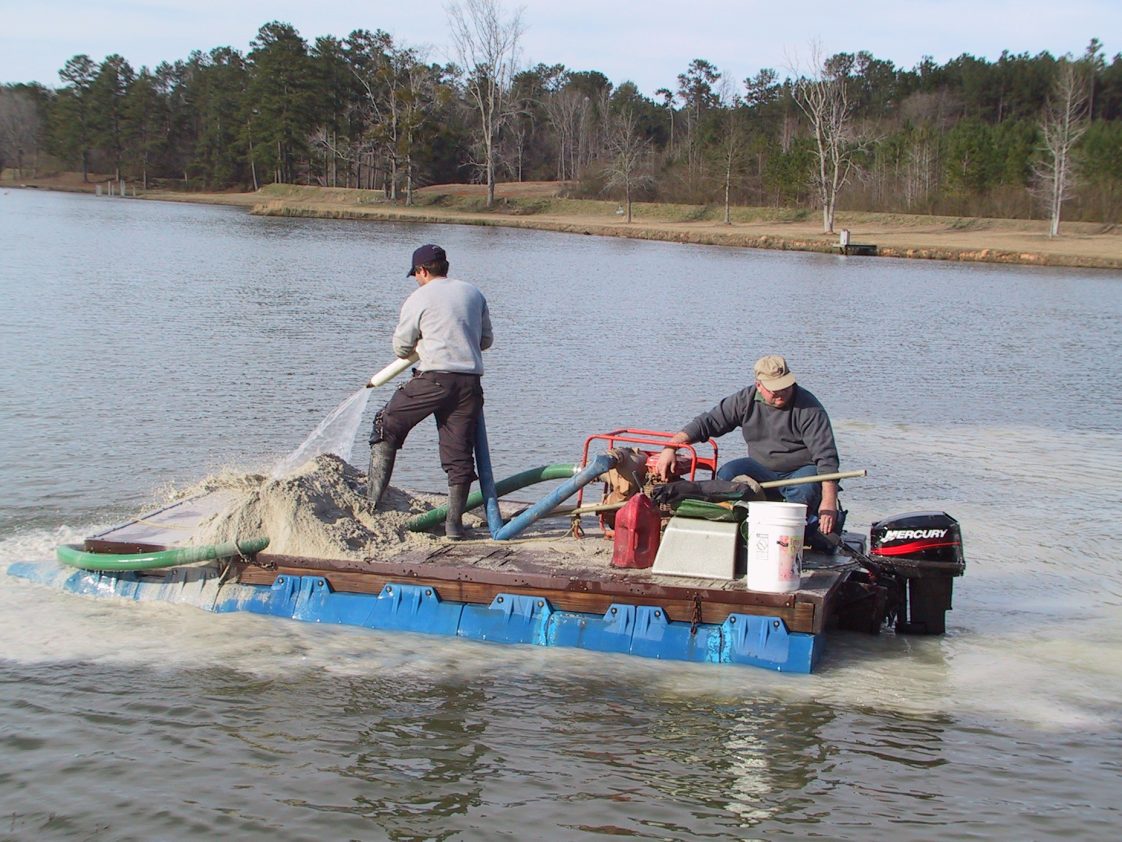
Figure 4. Applying lime from a barge.
The difficulty of application is the primary drawback to using agricultural limestone in ponds. Application of two tons or more per acre to full ponds requires that the lime be spread from a barge in all but the smallest ponds (figure 4). Without the aid of a liming barge and loader, spreading enough lime to fully neutralize the soils of the pond bottom can be backbreaking work. Many private pond consultants have the proper equipment to treat large ponds for a reasonable fee. For small ponds, less than about 3 acres, lime can be spread from the shore if the power spreader can approach the pond at several points around the shoreline so the lime will contact most of the pond bottom.
The easiest time to lime a pond is before the pond fills with water. With the pond dry, a spreader truck can easily apply large amounts of lime to the pond bottom and, hopefully, eliminate the need to add lime for several years. Of course, first the soil should be tested to make sure that the pond will benefit from liming.
Time of Application
Late fall and winter are the best times to lime a pond to correct the alkalinity and hardness so the water can support the maximum productivity in the following growing season. Applying lime in the winter allows adequate time for it to dissolve. Adding lime during the growing season also can disrupt the algae bloom by removing nutrients and algae from the water, temporarily reducing productivity and dissolved oxygen. Liming with agricultural lime in the summer can create a fish kill by causing oxygen depletion.
References
- Boyd, C.E., and C.A. Boyd. 2012. Physiochemical characteristics of ponds. Pages 49–80 in J.W. Neal and D.W. Willis, editors. Small Impoundment management in North America. American Fisheries Society, Bethesda, Maryland.
- Hargreaves, J.A. 1999. Control of clay turbidity in ponds. Southern Regional Aquaculture Center, Publication 460.
- Wright, R., C. Hyde, and P. Oakes. 2023. Pond building: a guide to planning, constructing and maintaining recreational ponds. Alabama Cooperative Extension System, Publication ANR-1114.
- Wurts, W.A. and M.P. Masser. 2013. Liming ponds of aquaculture. Southern Regional Aquaculture Center, Publication 4100.
- Wurts, W. A. and R. M. Durborow. 1992. Interactions of pH, carbon dioxide, alkalinity and hardness in fish ponds. Southern Regional Aquaculture Center, Publication 464.
 Rusty Wright, Extension Specialist, Associate Professor, Fisheries, Aquaculture, and Aquatic Sciences, Auburn University
Rusty Wright, Extension Specialist, Associate Professor, Fisheries, Aquaculture, and Aquatic Sciences, Auburn University
Revised April 2024, Adding Agricultural Lime to Recreational Fishing Ponds, ANR-0232

